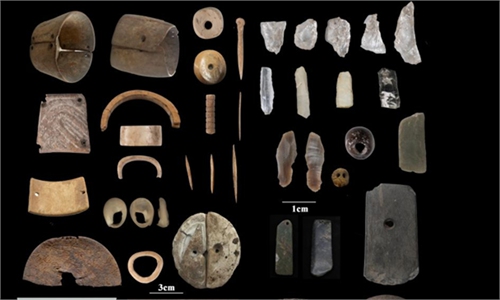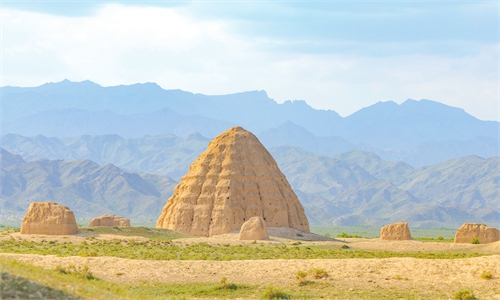ARTS / CULTURE & LEISURE
Northern Wei relics offer insight into socioeconomic devt

Photo: screenshot
A major relics site in the Northern Wei period (386-534) was discovered in Datong, North China's Shanxi Province during the ongoing fourth national survey of cultural relics, an official with the local cultural heritage bureau told the Global Times on Monday. The new finding provides evidence for the period's social and economic development.The site is located in Xicetian village, the Yunzhou district of Datong.
Situated on the southern bank of the Sanggan River, the site covers an area of approximately 40,000 square meters and is rich in artifacts, with identifiable items mainly including pottery jars, pots, basins, and a small number of architectural components, state broadcaster CCTV reported on Monday.
It is a new discovery reported by the local national survey team. Archaeological experts will be invited to conduct an on-site investigation on May 10 to assess the size of the site and verify the dating of the artifacts. Following in-depth research, they will evaluate the specific details of this discovery, an official surnamed Pan with the Datong Cultural Heritage Bureau, told the Global Times on Monday.
At present, the survey team has initiated 3D scanning and archiving of the site and is working with experts to conduct further studies based on excavated pottery shards and other artifacts, according to the report.
This finding provides a wealth of valuable physical evidence for the study of handicrafts, social production, and culture during the Pingcheng period of Northern Wei, Liu Zheng, a member of the Chinese Society of Cultural Relics, told the Global Times on Monday.
Pingcheng, currently named Datong, was the capital of the Northern Wei for 97 years. It served as the political, economic, and cultural center of North China during the period.
The Pingcheng era was an important early development period for the Northern Wei, during which they unified the north, carved the Yungang Grottoes, and carried out Sinicization reforms. As a result, numerous historical relics have been preserved, Liu noted.
The Yungang Grottoes, a UNESCO World Heritage site featuring over 50,000 stone Buddhist sculptures, is considered a pinnacle of Chinese Buddhist art and represents the highest level of sculptural artistry in the world during the 5th century.
The Jinbei Basin, where Datong is located, was a key area of human activity with abundant remains dating back to the Neolithic period. The discovery of Northern Wei pottery kilns indicates that a large population lived here at the time, with a well-developed handicraft industry and strong demand, said Liu.
The artifacts at the site are mainly daily necessities that may be related to a previously discovered Northern Wei pottery kiln site.
It is speculated that this could be the residential area associated with the pottery kiln site, the report said.
Several cemeteries from the Northern Wei period have been excavated in the Yunzhou district, including a Neolithic site and a Northern Wei period pottery site, which holds great significance for the study of the origins of modern humans and the early development of Chinese civilization.



